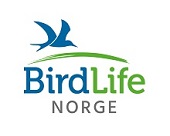
|
By Aïda López & Gunnar Hasle Spreading of genes affects the dynamics of ticks and tick-borne pathogens. There is ample evidence that ticks parasitize birds and thus are potentially being transported over open sea and mountain ranges. In 2011, Gunnar Hasle took a doctorate on the transport of ticks and tick-borne pathogens on northbound migratory birds. A major methodological problem that he never managed to solve was that it was not possible to confirm whether a tick found on a bird had been transported from another place or if the tick had arrived to the bird after it had landed in Norway. Hasle's partners have recently developed a genetic tool based on mitochondrial DNA and found that there are three clades in Northern Europe: Great Britain (GB), Continental Europe (EU) and Western Norway (WN) (see Figure 1, magenta, green and yellow respectively). This means that when a tick is examined, it is possible to say where it probably has come from. In biology and biological taxonomy, a clade is a group that includes a common ancestor and all descendants (living and extinct) of this progeny. By using mitochondrial DNA, which is stable for several thousand generations, it is possible to separate the clades from each other (see Figure 2). In spring 2017, Lista Bird Observatory has collected 277 ticks from Blackbirds and Robins, and collected local ticks in field at Lista. The current study is based on the fact that Blackbirds coming to Lista mainly fly across the North Sea, and that Robins do it through Jutland. It should be possible to find a clear pattern on the tick genes, with GB clade on Blackbirds, EU clade on Robins, and ticks collected at Lista should have a WN clade. If the results are like this, then it will validate the findings from Hasle's doctorate. In addition, this can be further developed into a new tool for ornithology, to find out where migratory birds have come from. | ||||||

| Ringing numbers | ||||||||||||
|
| Reportasje fra Lista FS i Aftenposten |

|
| Seasonal deviation | ||||||||||||||||||||||||||||||
|
|
Følg Følg Lista FS på facebook.com |
| Siste 5 på siden |
|
Looking for bird ringers for spring and/or autumn 2026 Report from spring 2025 Festivalgjester presenterer ny fuglebok Lista Fuglefestival 2025 Report from autumn 2024 |
| Nyheter BirdLife Norge |
|
Beskytt fjordene mot den... Tredje runde av Fotonøtta i... Akuttsituasjonen for lomviene... Behov for bedre... Skandinavias første... Legg ned vindkraftverket på... BirdLife Norge: Skuffet over... Arbeiderpartiet sitter med... |
Lista Fuglestasjon
Fyrveien 6
NO-4563 Borhaug
post@listafuglestasjon.no Tlf: 949 86 793
 |  |


 Only in English
Only in English



